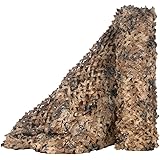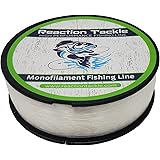In recent times, the global landscape has undergone significant transformations, prompting many to re-evaluate their connection with the natural world and the foundational skills required for self-reliance. As our routines shift, an increasing number of individuals are seeking to expand their knowledge of the outdoors, focusing on practical expertise that grounds us in fundamental principles. The accompanying video offers a comprehensive overview of 20 essential wilderness survival tips and bushcraft skills, providing a vital pathway back to basics. This article aims to delve deeper into these critical competencies, offering expanded insights and a more granular examination for those committed to mastering outdoor preparedness and enduring self-sufficiency.
Developing proficiency in bushcraft is not merely about surviving a crisis; it is about cultivating a deeper understanding of our environment and our inherent capabilities. From igniting a life-sustaining fire to improvising tools from found materials, each skill discussed underscores the profound importance of resourcefulness and adaptability. Therefore, this exploration serves as a detailed companion to the visual instruction, enriching your grasp of these techniques and reinforcing their practical application in diverse outdoor scenarios.
The Art of Firecraft: Igniting Lifelines in the Wild
Fire remains an indispensable element of wilderness survival, providing warmth, purifying water, cooking food, and offering a psychological boost. The video highlights several ingenious methods for fire starting, ranging from natural tinders to repurposed modern items. Understanding the principles behind each technique significantly enhances your chances of success, especially under challenging conditions where conventional methods might fail. Mastery of firecraft involves not only ignition but also the careful management of fuel and oxygen to sustain a robust flame.
Harnessing Fungi: The Crampball Advantage
The Daldinia concentrica, commonly known as crampball or coal fungus, is a remarkably versatile natural resource for fire starting. This fungus, frequently discovered on dead or decaying ash trees, possesses a unique cellular structure that allows it to catch a spark from a ferrocerium rod with relative ease. Once ignited, its slow-burning property means it can smolder for many hours, acting as a natural ember extender. Beyond its pyrotechnic utility, the pungent smoke produced by smoldering crampball fungus, when combined with moss in a split stick, serves as an effective mosquito repellent, a crucial comfort in insect-laden environments.
Improvised Accelerants: Hand Sanitizer and Glycerin
In a pinch, common items can be repurposed for fire starting. Alcohol-based hand sanitizers, with their typical ethanol content ranging from 60% to 95%, prove highly flammable. While the ethanol burns with a smokeless blue flame that may be difficult to discern in ambient light, its heat output is sufficient to ignite a tinder bundle quickly. Similarly, potassium permanganate, a chemical often found in first-aid kits for treating skin conditions, reacts exothermically with vegetable glycerin. This chemical reaction, though sometimes taking a minute to initiate, generates sufficient heat to cause spontaneous combustion, providing a reliable fire source when conventional methods are unavailable.
Mastering Tinder: Feather Sticks and Birch Bark
Effective fire starting fundamentally relies on proficient tinder preparation, especially when wood is damp. The feather stick technique transforms wet outer wood into fine, dry curls of inner wood, providing an excellent surface for catching sparks. By carving thin, continuous shavings while keeping them attached to the main stick, a concentrated fuel source is created that ignites readily and allows the flame to climb. The silver birch tree, with its distinctive silvery-white bark, offers another exceptional tinder. Even when dead and rotting, its inner bark contains resin that, when scraped into a fine dust, ignites rapidly and burns with an intense, sustained heat, ideal for establishing a fire base.
Friction Fire Reimagined: Ash and Charcoal Embers
When a fire has completely extinguished, even the residual ash and fine charcoal particles can be leveraged to rekindle a flame. By combining these materials with cotton wool and rolling them tightly into a compact tube, a primitive form of friction ignition can be achieved. Rolling this prepared bundle between a flat piece of wood and applying consistent pressure generates friction, which in turn creates heat. This thermal energy, when sufficiently concentrated, can cause the charcoal particles to smolder, forming an ember that can then be carefully transferred to a prepared tinder bundle and coaxed into a flame with added oxygen.
Modern Ingenuity: Duct Tape as a Combustible Aid
Duct tape, a ubiquitous item in many survival kits, transcends its traditional repair functions to become a valuable fire-starting material. The tape itself can be ignited directly with a flame, but in the absence of a lighter or matches, its adhesive properties and material composition can be utilized with a ferrocerium rod. By tearing thin strips and bundling them tightly into a ball, the fibers and adhesive create a surface receptive to sparks. The resulting flame burns for a considerable duration, allowing ample time to transition to larger kindling and establish a sustainable fire.
Ingenious Improvisation: Crafting Tools from Nature and Scraps
Resourcefulness in the wilderness often hinges on the ability to improvise tools and containers from available materials. Transforming seemingly mundane items or natural elements into functional implements is a hallmark of bushcraft expertise. These skills not only address immediate needs but also empower individuals with the confidence to adapt to unforeseen challenges in remote environments, underscoring the adage that necessity is indeed the mother of invention.
Repurposing the Humble Tin Can
The discarded tin can offers surprising versatility in a survival context. Beyond its original purpose, it can be expertly modified into a rudimentary fishing hook, a critical tool for acquiring sustenance. By carefully breaking and bending the ring pull, then sharpening one end against a stone, a functional hook can be fashioned. Furthermore, the body of the tin can can be transformed into a highly efficient candle lantern or a compact, wind-resistant stove. Slitting and folding the sides of the can creates wind deflectors for a candle, while strategically cut openings allow for controlled airflow, enhancing combustion when used as a twig-fed stove, especially when oriented towards the wind to maximize oxygen intake.
Crafting a Primitive Water Vessel
A lack of modern containers in the wild can be overcome with a bit of ingenuity and basic woodworking skills. A section of wood, approximately 3 inches in diameter and 6 inches in height, can be carefully split into four quarters. By sawing and carving grooves about an inch from the bottom of each piece, and then splitting off the inner sections, a cavity is created when the pieces are reassembled. Lashing these pieces together with cordage forms a functional cup. While an initial slight leakage is common due to the wood grain, submerging the cup in water for a few hours allows the wood to absorb moisture, expand, and seal the gaps, rendering it a serviceable vessel for collecting and holding water.
Weaving Utility: The Clematis Basket
Clematis, a common climbing vine in many deciduous woodlands, provides an excellent material for crafting improvised carrying containers. By selecting vines of varying diameters, a robust and functional basket can be woven. A framework is established using thicker vines, typically 1 to 1.5 inches in diameter, arranged in a spider-like structure. Thinner vines are then skillfully woven over and under, diagonally across the framework, to create a sturdy base. Subsequent weaving with progressively thicker vines builds up the sides of the basket. The remaining ends of the thick vines can be either trimmed or bent back into the weave, with two opposing ends lashed together to form a convenient carrying handle, ideal for transporting foraging finds or gear.
Natural Cordage and Secure Fastenings: The Backbone of Bushcraft
Cordage is fundamental in bushcraft, serving purposes from securing shelters to crafting traps and tools. When manufactured rope is unavailable, the ability to procure and process natural fibers becomes a paramount skill. The wilderness provides an abundance of materials that, with proper technique, can be transformed into strong, reliable bindings, thereby underscoring the importance of understanding botanical resources.
Tapping into Arboreal Roots for Cordage
Conifer trees, particularly those in densely wooded areas where light competition drives shallow root growth, offer an accessible source of natural cordage. By carefully digging down a few inches and tracing a root, a flexible length can be extracted. The rigid outer layer must be meticulously removed, often by scraping with sticks, to expose the pliable inner fibers. Further processing, such as splitting the root lengthwise with a knife or bashing it with a stick to break down the fibers, enhances its flexibility and strength. Soaking these processed roots in water significantly improves their pliability, making them easier to knot and weave into stronger two- or three-ply ropes suitable for lashing shelter components or primitive trap construction.
Cedar Bark: A Versatile Natural Fiber
The cedar tree stands out as an exceptionally versatile resource in bushcraft, offering materials for construction, fire lighting, and especially cordage. Its inner bark, known for being incredibly rot-resistant, can be separated into strong, pliable strips. These strips can be fluffed up for use as tinder or meticulously split down to create natural rope or cordage. Similar to conifer roots, soaking cedar bark in water prior to use enhances its flexibility and strengthens its binding properties. When harvested while damp, the bark can often be peeled off in large, continuous pieces, making it an excellent material for roofing shingles or other structural applications, as demonstrated in historical building practices like Native American wigwams and Viking houses.
Efficient Cordage Management: The Figure-Eight Hank
Managing cordage effectively is as crucial as producing it. Tangled lines can be a significant nuisance and time-waster in a survival situation. The figure-eight hanking method offers a simple yet highly effective solution for keeping cordage tidy and ready for rapid deployment. By weaving the rope in a continuous figure-eight pattern around the thumb and pinky finger, then securing the bundle by wrapping the free end and passing it through a loop, a compact and self-contained hank is formed. This method ensures that the cordage can be quickly unraveled without snags or knots, making it immediately available for use when speed and efficiency are paramount.
Essential Resourcefulness: Water, Wood, and Personal Gear Hacks
Beyond fire and tools, successful wilderness preparedness involves optimizing essential resources and adapting everyday items for survival. Mastery of these skills encompasses fundamental necessities like water purification, efficient wood processing, and extending the utility of personal gear. These techniques highlight the importance of meticulous planning, keen observation, and the ability to innovate under austere conditions, reinforcing a holistic approach to outdoor readiness.
Primary Water Filtration: A Multi-Layered Approach
Access to safe drinking water is non-negotiable for survival. While direct consumption of untreated water can lead to serious health issues, a makeshift filter can significantly improve its potability. A cut plastic bottle, with its cap on, can be layered with natural materials to create a rudimentary filtration system. Starting with moss and compressed grass at the bottom, followed by layers of small and then larger stones, this arrangement traps progressively finer particulate matter. Pouring dirty water through this system removes visible sediment, making it clearer. However, it is crucial to understand that this physical filtration only removes larger particles and does not eliminate harmful microorganisms. Therefore, filtered water must always be thoroughly boiled afterwards to render it safe for consumption, or treated with chemical purifiers if available.
Safe Wood Processing Techniques
The efficient and safe processing of firewood is a core bushcraft skill. When a solid chopping block is unavailable, a practical alternative involves using a horizontal log as a stable base. The log to be split is leaned against this base, ensuring only its top end makes contact. Chopping down into the supported log minimizes the risk of the axe head glancing off and striking a foot, particularly when using a longer axe rather than a hatchet. Maintaining bent knees and a wide stance further enhances safety by directing any missed swings into the ground. This technique, though requiring practice and careful execution, significantly reduces the hazards associated with processing wood in less-than-ideal conditions, though beginners should approach this with extreme caution.
Preserving Critical Gear: Head Torch Longevity
A head torch is an invaluable tool for nighttime navigation and tasks in the wilderness. However, accidental activation in a backpack can lead to a drained battery when it is most needed. A simple yet highly effective preventative measure involves reversing one of the batteries in the head torch, thereby breaking the electrical circuit. Alternatively, inserting a small piece of Blu Tack or a cutout card between the battery and the terminal can also prevent unwanted contact. Implementing these minor modifications ensures that the head torch remains functional and ready for deployment, preserving its critical power source for genuine survival situations.
Nature’s Abrasive: Dogfish Skin
The lesser spotted dogfish, common in UK waters, offers an unconventional yet highly effective natural abrasive material. Its skin possesses a unique sandpaper-like texture due to dermal denticles, making it historically prized for polishing wood. Once humanely dispatched, the skin can be carefully peeled off using a knife and pliers. It can be used immediately in its fresh state, or dried to enhance the prominence of its denticles, increasing its abrasive quality. This natural sandpaper provides a sustainable and readily available resource for smoothing wooden implements or refining other natural materials in a bushcraft context, showcasing nature’s unexpected utility in wilderness survival tips.











